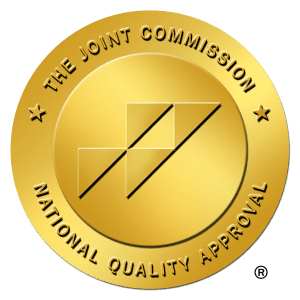
Alcohol withdrawal can manifest in various ways, ranging from mild tremors and anxiety to life-threatening medical emergencies. Among the most severe and feared complications is delirium tremens, a condition that demands immediate medical intervention and specialized care. Often referred to as “the DTs,” this severe form of alcohol withdrawal is not simply a bad hangover; it is a profound neurological crisis. Understanding the signs, underlying causes, risks, and essential treatment options for this dangerous form of alcohol withdrawal syndrome is critical and can be the difference between life and death. This guide will provide a comprehensive overview of what delirium tremens is, who is at risk, and why professional medical help is non-negotiable.
What Is Delirium Tremens?
Delirium tremens (DTs), clinically known as alcohol withdrawal delirium, represents the most severe manifestation of ethanol withdrawal. It is an acute and potentially fatal condition characterized by a sudden state of severe confusion, agitation, and significant disruption of the autonomic nervous system. DTs typically emerge 48 to 96 hours after the last alcoholic drink in individuals with a history of chronic and heavy drinking, though it can sometimes appear as late as 7 to 10 days.
The condition arises from profound neurochemical imbalances in the central nervous system that develop with long-term alcohol dependence. Alcohol (ethanol) is a depressant that slows brain function. To compensate, the brain of a heavy drinker increases the activity of its excitatory neurotransmitter systems. When alcohol is suddenly removed, the brain’s “brakes” are released, but the “accelerator” remains floored. This state of extreme hyperexcitability leads to the global dysfunction and dangerous symptoms that define delirium tremens. According to research published in journals like Clinical and Experimental Research, only a small percentage (around 3-5%) of individuals experiencing alcohol withdrawal will develop DTs, but for those who do, it is a medical emergency.
What Are the Warning Signs of Delirium Tremens?
The clinical presentation of delirium tremens is far more severe and complex than typical withdrawal symptoms. Early recognition is paramount for preventing a cascade into life-threatening complications. The symptoms can be broadly categorized into physical and neurological disturbances.
Physical Symptoms
The physical manifestations of DTs are dramatic and reflect a body in crisis. This state of severe autonomic hyperactivity and dysregulation can be life-threatening. Key physical symptoms include:
- Severe Tremors: Unlike the mild shakes of early withdrawal, these tremors can affect the entire body and are often uncontrollable.
- Tachycardia and Hypertension: A rapid heart rate (often over 100 beats per minute) and dangerously high blood pressure are hallmark signs of autonomic instability.
- Fever (Hyperthermia): Body temperature can rise significantly, increasing the body’s metabolic demands and risk of dehydration.
- Profuse Sweating (Diaphoresis): Individuals are often drenched in sweat, contributing to severe dehydration and electrolyte imbalances.
- Grand Mal Seizures: These are a major risk and can lead to injury, aspiration, or a dangerous condition called status epilepticus (a prolonged seizure).
This intense state of autonomic dysregulation places immense strain on the cardiovascular system and can lead to exhaustion, dehydration, and potentially cardiovascular collapse.
Neurological and Psychological Symptoms
The cognitive and perceptual disturbances of delirium tremens are terrifying for the individual experiencing them. These symptoms are a direct result of the brain’s severe hyperexcitability.
- Profound Confusion and Disorientation: Individuals are often completely disoriented to time, place, and person. They may not recognize family members or understand they are in a hospital.
- Severe Agitation: Extreme restlessness, or psychomotor agitation, makes it impossible for the person to remain calm or still. They may pace, thrash, or pull at IV lines.
- Hallucinations: These are extremely common and vivid. While visual hallucinations (e.g., seeing insects or threatening figures) are classic, tactile (feeling things crawling on the skin) and auditory hallucinations also occur.
- Intense Anxiety and Paranoia: Overwhelming fear and paranoia can cause patients to become defensive, aggressive, or attempt to flee from perceived threats.
Who Is at Risk for Developing Delirium Tremens?
Not everyone who experiences alcohol withdrawal will develop DTs. Certain factors significantly increase an individual’s vulnerability, signaling the need for heightened medical vigilance during detoxification.
Duration and Quantity of Alcohol Use
The most significant risk factor is the pattern of chronic alcohol abuse. Individuals with a long history of heavy drinking are most at risk. The National Institute on Alcohol Abuse and Alcoholism (NIAAA) defines heavy drinking as consuming more than four drinks on any day or more than 14 drinks per week for men, and more than three drinks on any day or more than seven drinks per week for women. A history of daily drinking for several months or years creates profound alcohol dependence, setting the stage for a severe withdrawal syndrome.
Previous Withdrawal Episodes
A history of complicated alcohol withdrawal is a powerful predictor of future episodes of delirium tremens. Each withdrawal episode can have a “kindling” effect on the brain. This theory suggests that repeated periods of withdrawal sensitize the central nervous system, making subsequent episodes progressively more severe. This sensitization is linked to changes in neurotransmitter systems, particularly the downregulation of inhibitory GABA-A receptor function and the upregulation of excitatory NMDA receptors, which become increasingly hyperactive with each withdrawal cycle.
Co-occurring Medical Conditions
An individual’s overall health plays a crucial role. Co-occurring medical issues can impair the body’s ability to cope with the immense stress of withdrawal, increasing the risk of DTs. These conditions include:
- Alcoholic liver disease or alcoholic hepatitis
- Infections, head injuries, or recent surgery
- Nutritional deficiencies, particularly a lack of thiamine (vitamin B1), which can lead to related neurological conditions like Wernicke’s encephalopathy
- Electrolyte imbalances, such as magnesium deficiency
Why Is Medical Supervision Necessary for Alcohol Detox?
Given the severity and unpredictability of delirium tremens, attempting to detox from alcohol at home (“cold turkey”) after prolonged heavy use is exceptionally dangerous and can be fatal.
Potentially Fatal Complications
Without medical intervention, the mortality rate for delirium tremens can be as high as 35%. Even with modern medical care, it remains a serious condition. The primary causes of death are:
- Cardiovascular Collapse: Uncontrolled high blood pressure and rapid heart rate can lead to fatal arrhythmias or heart failure.
- Respiratory Failure: Severe agitation and seizures can compromise breathing.
- Status Epilepticus: A state of continuous seizure activity that can cause irreversible brain damage and death.
- Aspiration Pneumonia: Inhaling vomit during a seizure or period of profound confusion.
- Dehydration and Electrolyte Imbalance: Can lead to kidney failure and cardiac arrest.
Why Professional Detox Services Are Essential
Professional treatment of alcohol withdrawal in a hospital or specialized detox facility is the only safe approach. Medical teams provide:
- 24/7 Monitoring: Constant observation of vital signs allows for immediate intervention.
- Pharmacological Approaches: Benzodiazepines (like diazepam or lorazepam) are the cornerstone of treatment. They work similarly to alcohol on GABA-A receptors, calming the hyperexcited central nervous system to prevent seizures and reduce agitation.
- Supportive Care: Intravenous (IV) fluids are often administered to correct dehydration and electrolyte imbalances. A common formulation, sometimes called a “banana bag,” includes thiamine (vitamin B1), folate, and multivitamins to prevent Wernicke’s encephalopathy, a serious neurological disorder.
- Clinical Assessment: Staff use standardized tools like the Clinical Institute for Withdrawal Assessment for Alcohol, Revised Scale (CIWA-Ar) to objectively measure symptom severity and guide medication dosage.
What Does Comprehensive Treatment for Alcohol Use Disorder Include?
Safely navigating delirium tremens is the first, life-saving step. However, it does not address the root cause: alcohol use disorder (AUD). A comprehensive, long-term treatment plan is essential for preventing relapse and achieving sustainable recovery.
Evidence-Based Treatment Approaches
Effective treatment for substance use disorders like AUD involves a multi-faceted strategy that addresses the psychological, behavioral, and social aspects of addiction. Comprehensive alcoholism treatment often includes:
- Individual Therapy: Cognitive-Behavioral Therapy (CBT) and other modalities help individuals identify triggers and develop healthy coping skills.
- Group Counseling: Provides a supportive environment for sharing experiences and learning from peers.
- Family Therapy: Heals relationships damaged by addiction and builds a stronger support network for recovery.
- Medication-Assisted Treatment (MAT): Medications like naltrexone or acamprosate can help reduce cravings and support long-term sobriety.
Holistic Healing and Long-Term Recovery
Lasting recovery involves rebuilding a life where alcohol is no longer needed. This holistic approach addresses the whole person. A critical component is managing the long-term neurological consequences of chronic alcohol use. Conditions like Wernicke-Korsakoff syndrome, a severe brain disorder encompassing Wernicke’s encephalopathy (acute phase) and Korsakoff syndrome (chronic memory impairment), are a devastating potential outcome of untreated thiamine deficiency.
Long-term recovery is bolstered by ongoing engagement with support groups like Alcoholics Anonymous (AA) or other peer-led communities. Resources from organizations like the Substance Abuse and Mental Health Services Administration (SAMHSA) can connect individuals with alcohol rehabilitation programs and other crucial services.
When Should You Seek Help for Alcohol Dependence?
If you or someone you know has a history of heavy drinking and decides to stop, it is crucial to seek medical advice before withdrawal begins. Do not wait for a crisis like delirium tremens to unfold. Professional help is urgently needed if an individual:
- Has a history of daily, heavy alcohol consumption
- Has experienced seizures or DTs during a previous withdrawal
- Experiences shaking, sweating, anxiety, or vomiting within 6-12 hours of their last drink
- Has co-occurring medical or mental health conditions
Treating alcohol dependence is not a matter of willpower; it is a medical necessity.
Begin Your Recovery Journey Today
Delirium tremens is a harrowing medical emergency that highlights the profound dangers of untreated alcohol use disorder. It is a stark reminder that alcohol withdrawal can be far more than just uncomfortable—it can be lethal. However, with immediate and appropriate medical care, individuals can safely overcome this crisis and begin the journey toward lasting recovery.
Recovery is not just possible; it is a reality for millions. It begins with the courageous step of asking for help. A medically supervised detox provides the safety and stability needed to clear the body of alcohol, and a comprehensive treatment program provides the tools to heal the mind and spirit.
At Grata in Ventura County, we understand the complexities of alcohol dependence and the critical importance of medically supervised detoxification. Our treatment approach addresses not just the physical aspects of withdrawal but also the underlying trauma and factors that contribute to addiction. Our compassionate team provides the medical expertise, therapeutic support, and individualized care needed to move from dependence to a life of health, healing, and hope.
If you or a loved one is struggling, do not wait for a crisis to force a decision. Contact us today to start building a healthier, sober future. Your journey to recovery can begin with a simple phone call.
